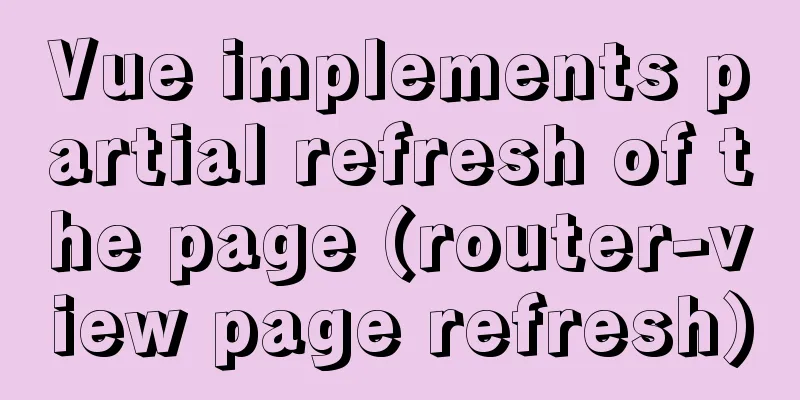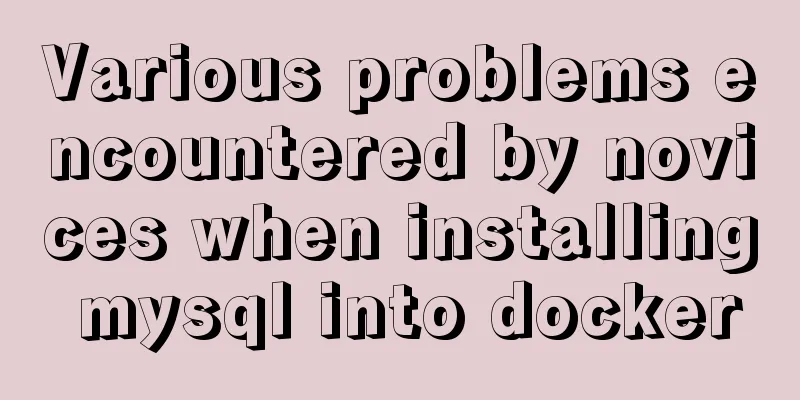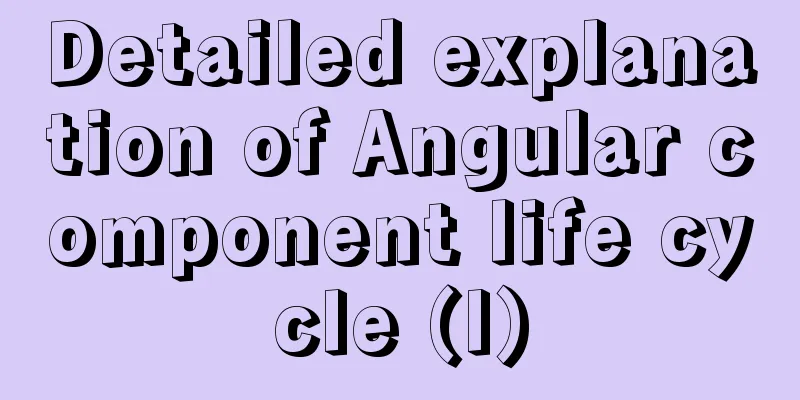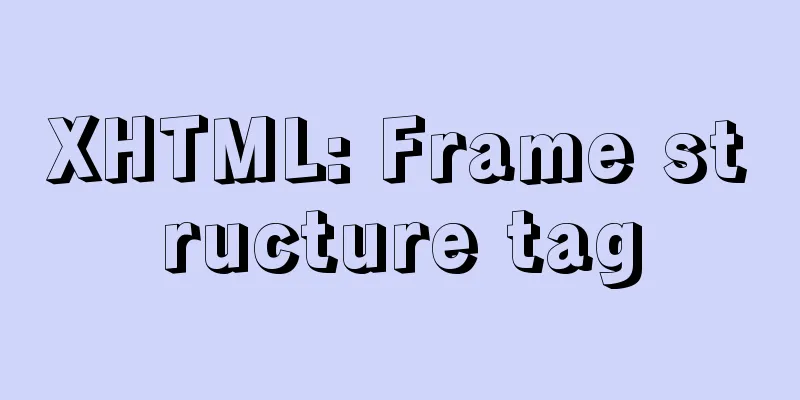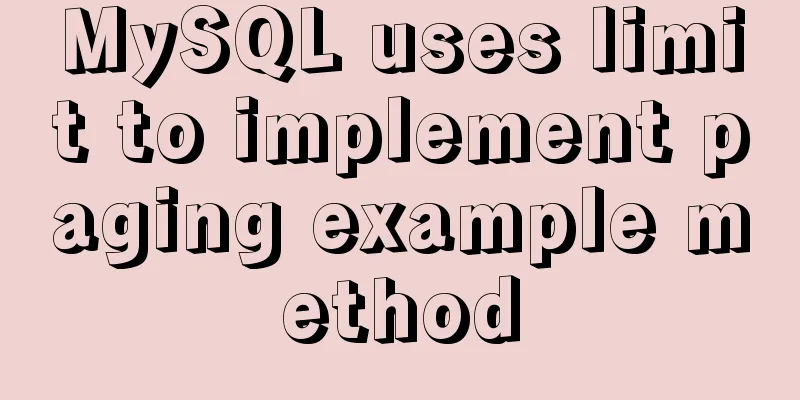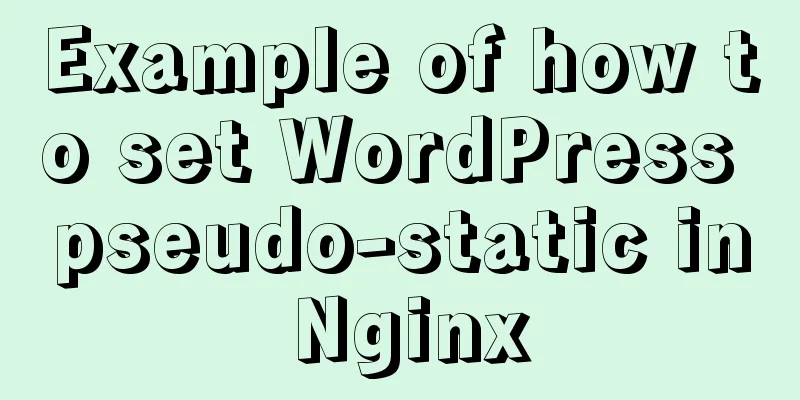The difference between useEffect and useLayoutEffect in React
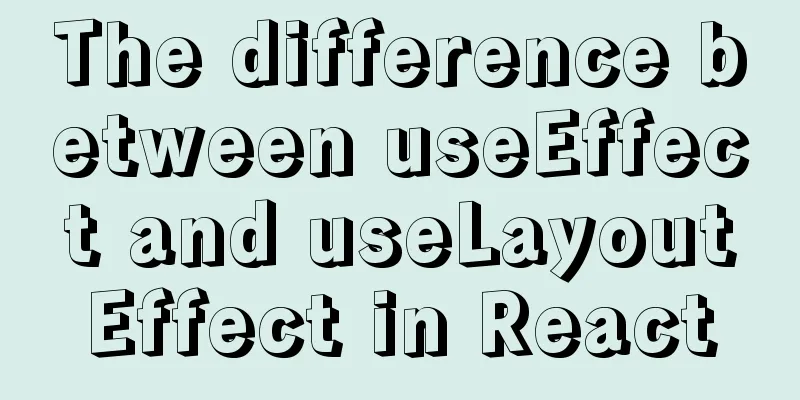
PrerequisitesWe can divide React's workflow into several parts:
The work in the commit phase is mainly divided into three parts, and the corresponding function names in the source code are:
The difference between useEffect and useLayoutEffect lies mainly in the processing of these three stages. The conclusion is: useEffect will execute its response function and the last destruction function asynchronously, while useLayoutEffect will execute its response function and the last destruction function synchronously, which will block DOM rendering. useEffect commitBeforeMutationEffectsIn this stage, useEffect will focus on the following sentence:
function commitBeforeMutationEffects() {
while (nextEffect$1 !== null) {
// A series of assignment operations are omitted. The flags here should be taken from the flags of the effect of the corresponding FunctionComponent. For specific implementation, please refer to the source code var flags = effect.flags;
// Processing life cycle if ((flags & Snapshot) !== NoFlags) {
setCurrentFiber(nextEffect$1);
commitBeforeMutationLifeCycles(current, nextEffect$1);
resetCurrentFiber();
}
// This if statement only checks if useEffect is true and useLayoutEffect is false
if ((flags & Passive) !== NoFlags) {
// If there are passive effects, schedule a callback to flush at
// the earliest opportunity.
if (!rootDoesHavePassiveEffects) {
rootDoesHavePassiveEffects = true;
// This is why useEffect is asynchronous. React will schedule flushPassiveEffects after DOM operation.
scheduleCallback(NormalPriority, function () {
flushPassiveEffects();
return null;
});
}
}
nextEffect$1 = nextEffect$1.nextEffect;
}
}
commitMutationEffectsDuring this phase, React will perform a series of DOM node updates and then execute a method: commitHookEffectListUnmount(HookLayout | HookHasEffect, finishedWork); Then a Functional Component with useEffect does not conform to the unmount judgment logic at this stage, so the unmount operation will not be performed at this place. commitLayoutEffectsAt this stage, there is still a very important method: commitHookEffectListMount(HookLayout | HookHasEffect, finishedWork); This if judgment is the same as the if judgment in the previous stage. useEffec will not perform any operation in this judgment. Subsequent stagesAfter completing commitLayoutEffects, there is one more operation:
if (rootDoesHavePassiveEffects) {
// This commit has passive effects. Stash a reference to them. But don't
// schedule a callback until after flushing layout work.
rootDoesHavePassiveEffects = false;
rootWithPendingPassiveEffects = root;
pendingPassiveEffectsLanes = lanes;
pendingPassiveEffectsRenderPriority = renderPriorityLevel;
}
That is, rootWithPendingPassiveEffects is set to root. The reason for this is related to the next flushPassiveEffects asynchronous scheduling registered by useEffect in the first phase commitBeforeMutationEffects. Let's look at the following flushPassiveEffects implementation:
function flushPassiveEffectsImpl() {
if (rootWithPendingPassiveEffects === null) {
return false;
}
//Omit a series of performance tracking operations commitPassiveUnmountEffects(root.current);
commitPassiveMountEffects(root, root.current);
}
As can be seen from the above code snippet, the scheduling callback registered by useEffect in the first phase will be unmounted and mounted after the page is updated. It is worth mentioning that the effect in this callback is registered in the commitLayoutEffects phase. useLayoutEffectIn fact, according to our analysis of useEffect, in the if judgments in the commitMutationEffects and commitLayoutEffects stages, useLayoutEffect is judged by if, so in the commitMutationEffects stage, the last destruction function of useLayoutEffect is executed synchronously, and in the commitLayoutEffects stage, the execution function of useLayoutEffect this time is executed synchronously, and the destruction function is registered. in conclusionSo far, we have roughly reviewed the code of the commit phase and analyzed why useEffect is executed asynchronously and useLayoutEffect is executed synchronously. I did not post too much specific code in the article because these are all variable. The real process overview and the mental model of the React team designing this mechanism require us to slowly become familiar with it through continuous debugging of code and understanding. What I am interested in later is the implementation of hooks. Among them, I will focus on the source code of the more critical useReducer to see if I can write a simple version and put it in the Alipay applet to implement a custom Alipay hooks for daily productivity development. This is the end of this article about the difference between useEffect and useLayoutEffect in React. For more relevant React useEffect useLayoutEffect content, please search 123WORDPRESS.COM's previous articles or continue to browse the following related articles. I hope everyone will support 123WORDPRESS.COM in the future! You may also be interested in:
|
<<: Solve the problems encountered during the installation of Mysql 8.0.17 winx64 version
>>: What are the differences between CDN, SCDN, and DCDN for website acceleration? How to choose?
Recommend
The latest version of MySQL5.7.19 decompression version installation guide
MySQL version: MySQL Community Edition (GPL) ----...
Introduction to Linux File Compression and Packaging
1. Introduction to compression and packaging Comm...
JavaScript to implement a simple clock
This article example shares the specific code for...
Analysis of the HTML writing style and reasons of experienced people
1. Navigation: Unordered List vs. Other Label Ele...
Detailed explanation of the process of building Prometheus+Grafana based on docker
1. Introduction to Prometheus Prometheus is an op...
Tutorial on installing MYSQL8.X on Centos
MySQL installation (4, 5, 6 can be omitted) State...
Mount the disk in a directory under Ubuntu 18.04
Introduction This article records how to mount a ...
Sample code for implementing two-way authentication with Nginx+SSL
First create a directory cd /etc/nginx mkdir ssl ...
Install Ubuntu 18 without USB drive under Windows 10 using EasyUEFI
1. Check BIOS First check which startup mode your...
MySQL 5.6.23 Installation and Configuration Environment Variables Tutorial
This article shares the installation and configur...
Docker custom network detailed introduction
Table of contents Docker custom network 1. Introd...
Vue shopping cart case study
Table of contents 1. Shopping cart example 2. Cod...
A brief discussion on logic extraction and field display of Vue3 in projects
Table of contents Logical Layering Separate busin...
Complete steps for using Nginx+Tomcat for load balancing under Windows
Preface Today, Prince will talk to you about the ...
Detailed explanation of non-primary key column overflow monitoring in MySQL tables
Today, I fell into the trap again. I have encount...


